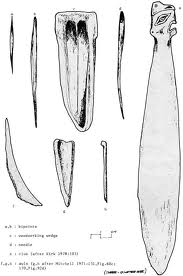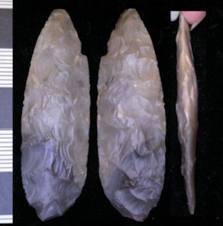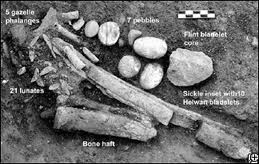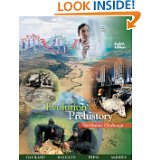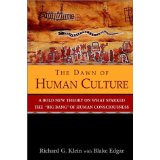- Latest Archaeology Updates
- Importance and applicability
- Famous Archaeologists
- Museums Collections
- Site Map
- World Heritage Sites
- World History Monuments
- Archaeological Organizations
- World Atlas of Archaeology
- Forensic Investigation and Geophysics
- Contact Us
- Movies based on Archaeology
- Frequently Asked Questions
- Archaeological discoveries
- Tell a Friend
- Archaeological Abbreviations
- Gallery Collections
- Famous-Museums site map
- Famous-archaeologists site map
- Archaeological Monuments site map
Prehistoric archaeology is the study of human activity that occurred before written records. It is the interdisciplinary study of the material remains of past societies, such as artifacts, features, and ecofacts, as well as the contexts in which they were found. Prehistoric archaeology covers a wide range of time periods, including the Paleolithic, Mesolithic, Neolithic, and Bronze and Iron Ages.
The field of prehistoric archaeology often relies on a variety of methods to reconstruct the past. These methods can include field survey, excavation, laboratory analysis, and experimental archaeology. Field survey involves walking across a landscape to identify potential sites and collect artifacts. Excavation involves digging into a site to uncover ancient features and artifacts.
Laboratory analysis involves examining artifacts and other materials in the laboratory, such as pottery, stone tools, and bones. Experimental archaeology is the use of replicas, models, and simulations to reconstruct ancient activities.
Prehistoric archaeology can provide important insights into the lives of ancient peoples. By analyzing artifacts, features, and ecofacts, archaeologists can gain an understanding of ancient technology, subsistence practices, and religious beliefs. They can also examine the development of social complexity, trade networks, and political systems.
Prehistoric archaeology can also provide insight into the paleo-environment and the relationship between humans and the land. For example, by examining sediment cores, archaeologists can reconstruct past climate and vegetation. By studying animal bones, they can determine what animals were hunted and how they interacted with their human hunters.
In addition to the scientific and historical importance of prehistoric archaeology, it can also be used to help inform contemporary conservation efforts and understand the long-term effects of human activity on the environment. Prehistoric archaeology is an important field of study, as it provides insight into our distant past and illuminates the development of human societies over time. It is a field of study that is constantly evolving as new methods and technologies are developed.
Origin and Spread of Agriculture
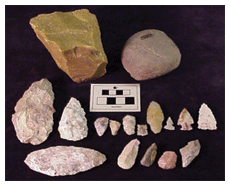
The Stone Age is the period in human prehistory characterized by the use of stone tools that dates from 3.3 million years ago to about 3000 BC, when metal tools began to be used. During the Stone Age, humans made tools and weapons from stone, hunted and gathered food, and created art and music. The Stone Age is divided into three distinct periods: the Paleolithic (or Old Stone Age), the Mesolithic (or Middle Stone Age), and the Neolithic (or New Stone Age).
Middle Paleolithic:
The Middle Paleolithic is a period of prehistory between the Upper Paleolithic and the Lower Paleolithic, lasting from 300,000 to 40,000 years ago. It is characterized by the emergence of more sophisticated tools and weapons, such as the handaxe, spear points, and blade tools. The Middle Paleolithic also marks the expansion of Homo sapiens into Europe, and the shift from a hunter-gatherer lifestyle to a more settled existence. It is also during this time that significant cultural developments occurred, such as the production of art and ritual artifacts.
Upper Paleolithic :
The Upper Paleolithic period began around 40,000 years ago and lasted until around 10,000 years ago. It was a time of great cultural development and technological advancement. During this period, humans perfected stone tool technology and developed better ways to hunt and gather food. They also began creating art and creating complex social networks. They also developed the use of fire, and began to domesticate animals. During this period, humans learned to make pottery, developed organized religion, and developed a variety of different languages. In addition, humans began to expand their geographic range, eventually settling in nearly all parts of the world. This period of human history marks the dawn of modern human culture.
Hunter-gatherers are people who rely on hunting animals, gathering wild plants, and fishing as their primary means of obtaining food. They live in small, nomadic bands and do not practice agriculture. Hunter-gatherers have a deep knowledge of and connection to the environment and its resources, which allows them to survive in a variety of different climates and landscapes. They are skilled hunters, trackers, and gatherers, and their way of life is closely connected to their cultural and spiritual beliefs. Hunter-gatherers have been part of human history for thousands of years and continue to exist in various forms around the world today.
Tools of the Hunter-Gatherer:
The hunter-gatherer tool kit includes items such as stone tools, spears, bows and arrows, fishing hooks, nets, harpoons, and slingshots. More primitive tools, such as sharpened sticks, digging sticks, and throwing sticks, were also used. Other tools such as fire-making tools, containers, and cutting tools were also utilized. The hunter-gatherer lifestyle was dependent on the ability to craft and use tools.
The Impact of Climate Change on Prehistoric Populations
This could lead to increased competition and conflict between neighboring populations. Climate change can also affect the spread of disease. Changes in temperature and precipitation can alter the environment in which pathogens are able to thrive. This can lead to an increase in the prevalence of diseases, which can have a devastating effect on prehistoric populations. In addition, changes in temperature can affect the migratory patterns of animals, which can lead to an increase in the transmission of zoonotic diseases. Climate change can also have an indirect effect on prehistoric populations. Changes in temperature and precipitation can lead to an increase in the frequency and intensity of extreme weather events such as floods, droughts, and storms. These events can have a devastating effect on prehistoric populations, as they can destroy homes, crops, and livestock. In addition, extreme weather events can lead to an increase in the spread of disease, as people are more likely to come into contact with pathogens in a flood or drought. Overall, climate change has had a significant impact on prehistoric populations. Changes in temperature, precipitation, and other environmental conditions can lead to an increase in competition for resources, the spread of disease, and the destruction of homes and crops. It is important to study the effects of climate change on prehistoric populations, as this can help us to better understand how our ancestors were able to cope with environmental changes.
Books on the Prehistoric Archaeology :
Evolution and Prehistory - An Archaeology of Scandinavia AD 400-1000:
The archaeological history of Scandinavia from AD 400 to 1000 is marked by a period of transformation from a primarily rural and agricultural society to a more urban and trading one. During this period, the area saw the development of larger settlements, the growth of trade networks, and the spread of Christianity. The earliest archaeological evidence for this period comes from the 5th and 6th centuries, when large burial mounds known as tumuli appeared in southern Scandinavia, often in connection with royal burial sites. These tumuli contained richly decorated, high-status graves, suggesting a stratified society with powerful elites.
The Oxford Illustrated History of Prehistoric Europe
:
This book provides an overview of the development of prehistoric Europe from its origins in the Paleolithic era up to the Iron Age. It examines the changing lifestyles and cultures of the continent's inhabitants, their art, technology, and religious beliefs, as well as the migrations and migratory patterns of early human populations. It also discusses the impact of the environment and climate on prehistoric societies, and the impact of the arrival of new populations and cultures.
The Dawn of Human Culture :
Human culture is believed to have first appeared during the Stone Age, when humans evolved the ability to think and communicate. This allowed them to create tools and weapons, and to hunt and forage for food, which allowed them to survive and thrive. Over time, humans developed the skills necessary for crafting and creating art, which served as a form of communication and reflection of their environment. As they interacted with each other, this further enabled them to develop language, religion, and other forms of cultural exchange. This dawn of human culture marked the beginning of humanity's journey as a species.
Rich Resources over the web on Prehistoric Archaeology
- Prehistoric archaeology in Wiki :Human culture is believed to have first appeared during the Stone Age, when humans evolved the ability to think and communicate. This allowed them to create tools and weapons, and to hunt and forage for food, which allowed them to survive and thrive. Over time, humans developed the skills necessary for crafting and creating art, which served as a form of communication and reflection of their environment. As they interacted with each other, this further enabled them to develop language, religion, and other forms of cultural exchange. This dawn of human culture marked the beginning of humanity's journey as a species.
- About Prehistoric Archaeology :Prehistoric archaeology is the study of the human past through the analysis of material remains from archaeological sites. It focuses on societies that existed before the invention of written records. The material remains studied by prehistoric archaeologists include artifacts, such as tools and pottery; ecofacts, such as animal bones and plant remains; and features, such as fire hearths and postholes. Prehistoric archaeologists also use information from other disciplines, such as geology, paleontology, and linguistics, to gain a better understanding of the past.
-
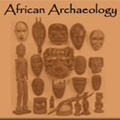
African Archaeology is the study of the history and prehistory of the African continent, as well as its societies and cultures, through the use of archaeological evidence. African Archaeology covers a broad range of topics, from the Stone Age to the present day. -
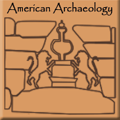
American Archaeology also known as New World archaeology, is the study of the archaeological history and prehistory of the Americas. It is a subfield of archaeology, the study of the human past, which seeks to understand societies and cultures by examining their material culture, such as artifacts and ruins. -
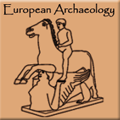 European Archaeology is the scientific study of the material remains of past cultures and societies in Europe, from the Paleolithic period to the present day. It is an interdisciplinary field which draws on the methods and theories of a range of disciplines, including history, anthropology, art history, geography, geology and linguistics.
European Archaeology is the scientific study of the material remains of past cultures and societies in Europe, from the Paleolithic period to the present day. It is an interdisciplinary field which draws on the methods and theories of a range of disciplines, including history, anthropology, art history, geography, geology and linguistics. -
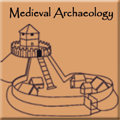
Medival archaeology is a field of archaeology that is primarily concerned with the material remains of the Middle Ages, which is roughly defined as the period from the 5th to the 15th century. -
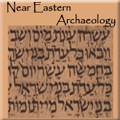 Near Eastern Archaeology is the study of the material culture found in the Near East, a region of Eurasia that covers the Middle East, North Africa, and parts of Central Asia. The region is often referred to as the cradle of civilization, as it is the site of some of the earliest known civilizations, including the Sumerian, Babylonian, and Assyrian empires.
Near Eastern Archaeology is the study of the material culture found in the Near East, a region of Eurasia that covers the Middle East, North Africa, and parts of Central Asia. The region is often referred to as the cradle of civilization, as it is the site of some of the earliest known civilizations, including the Sumerian, Babylonian, and Assyrian empires. -
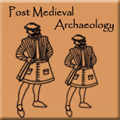
Post Medieval Archaeology is the study of the period from the 15th century to the 19th century. It is a period of great change and transformation, with the rise of nation states, the onset of industrialization and the spread of global trade. Archaeological evidence from this period reflects the development of these changes and the impact they had on everyday life. -
 Modern Archaeology is the study of human activity in the past using the material remains of a culture. It is a subfield of anthropology that includes the study of artifacts, architecture, landscapes, and cultural landscapes. It is a scientific approach to the study of past cultures and societies, and often involves excavation, laboratory analysis, and other research method
Modern Archaeology is the study of human activity in the past using the material remains of a culture. It is a subfield of anthropology that includes the study of artifacts, architecture, landscapes, and cultural landscapes. It is a scientific approach to the study of past cultures and societies, and often involves excavation, laboratory analysis, and other research method

